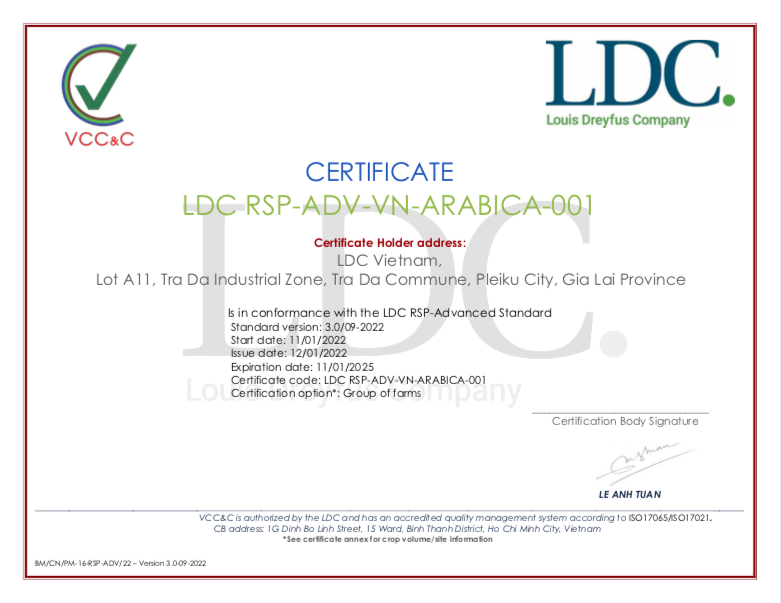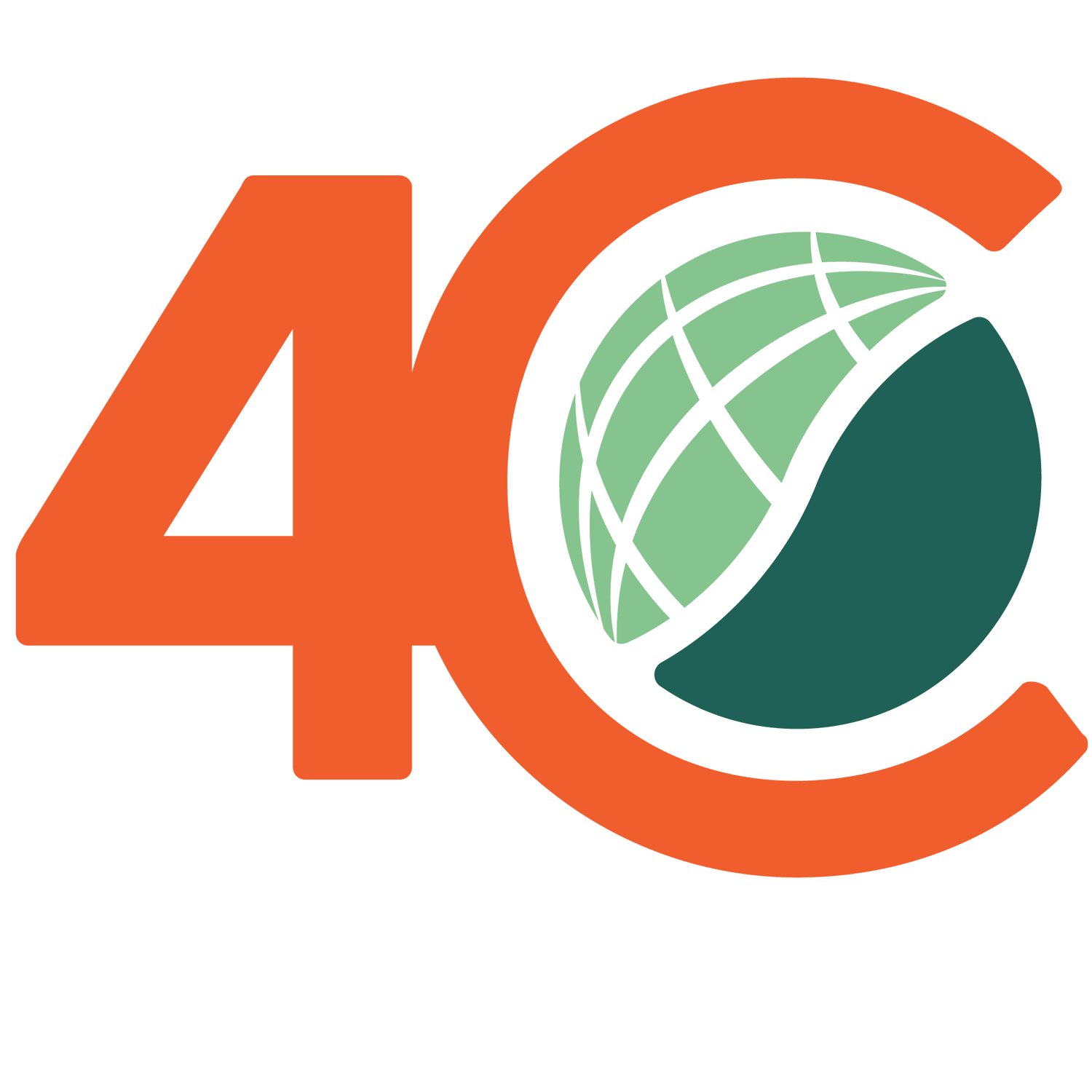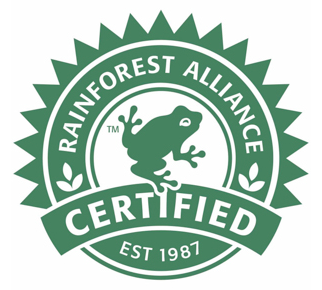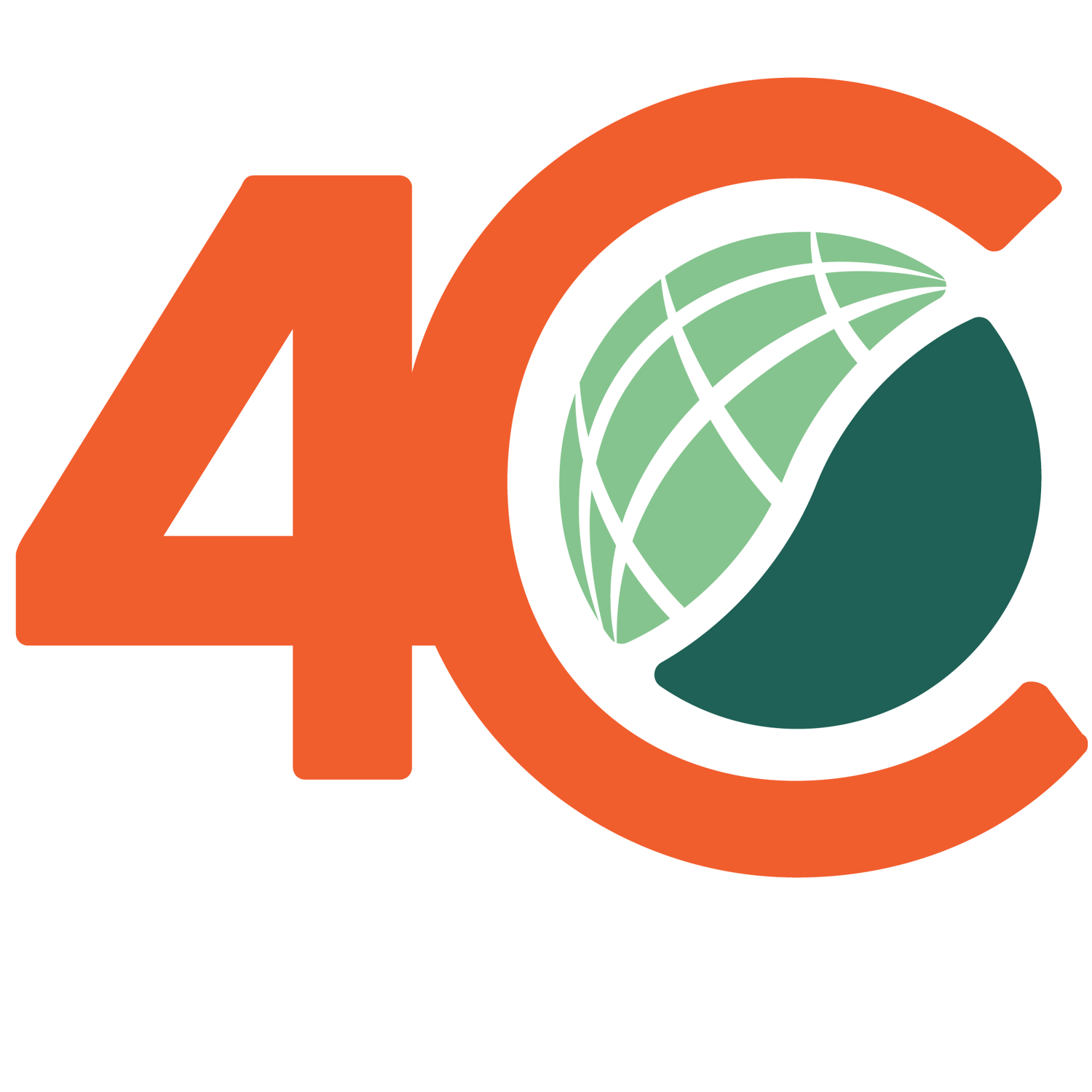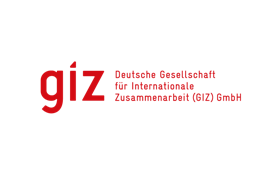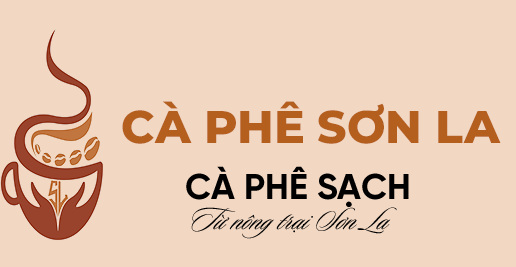About us
Son La Coffee Processing Joint Stock Company was approved by the People's Committee of Son La province to invest in building the Son La coffee processing factory in Thong Nhat village, Muong Bon commune, Mai Son district, Son La province with an area of 40,187 m2. The plant is modern, synchronous, closed, and circulating without emissions. The factory also uses fermented wet processing technology with a yearly capacity of 50,000 tons of fresh fruit coffee. The production of green coffee is about 12,500 tons per year. Technology to thoroughly treat wastewater for reuse and water saving. In addition, coffee pods and by-products during processing are used as raw materials for producing organic fertilizers for crop development.
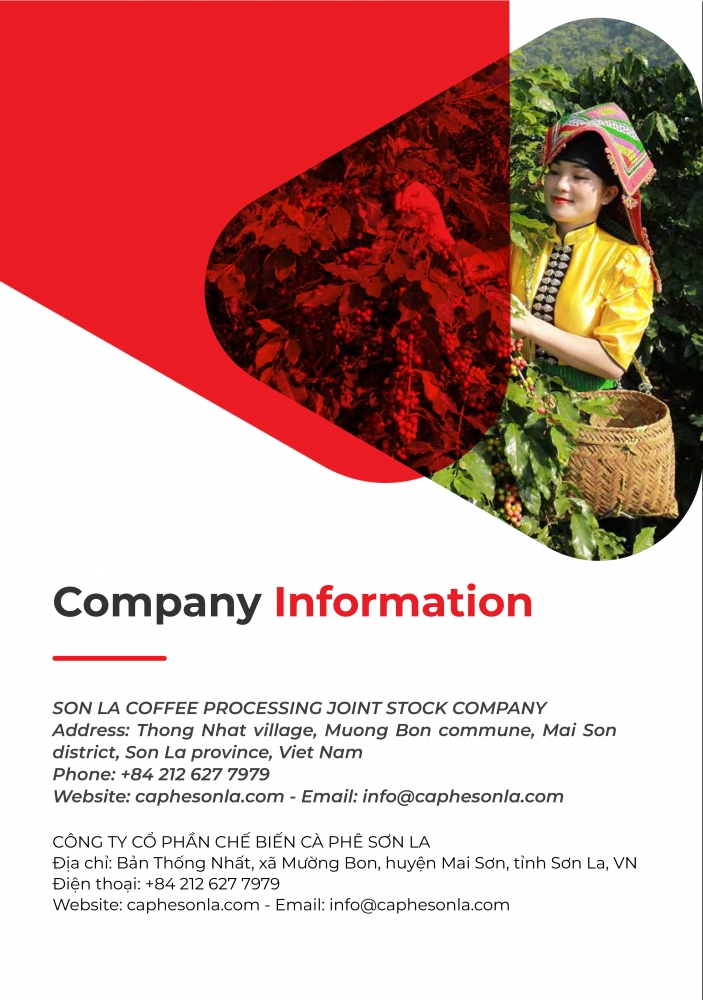
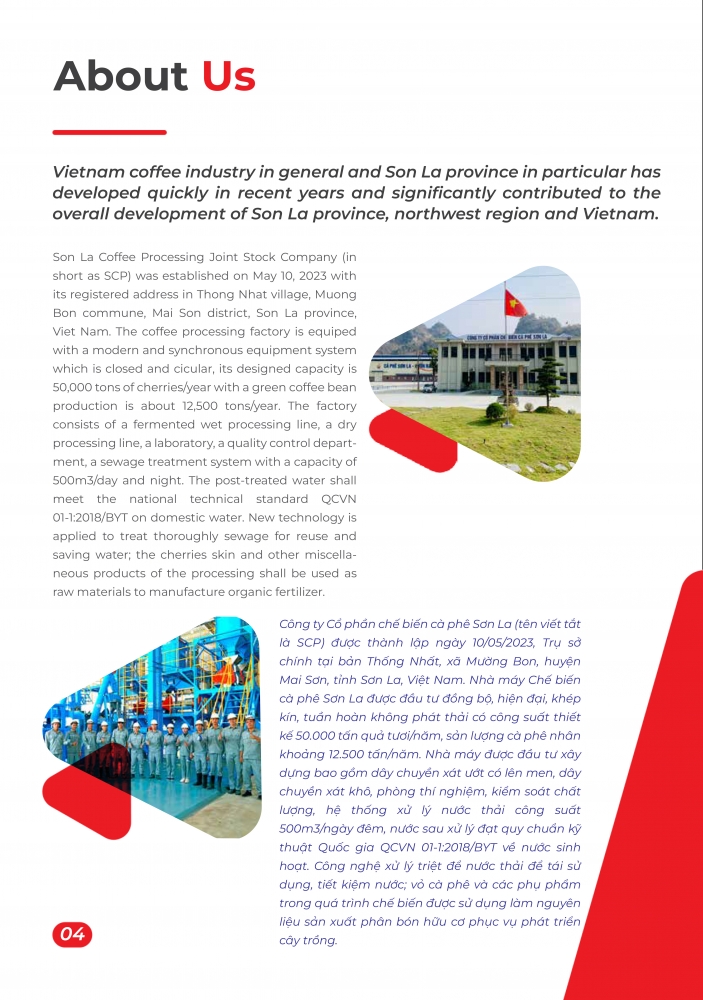
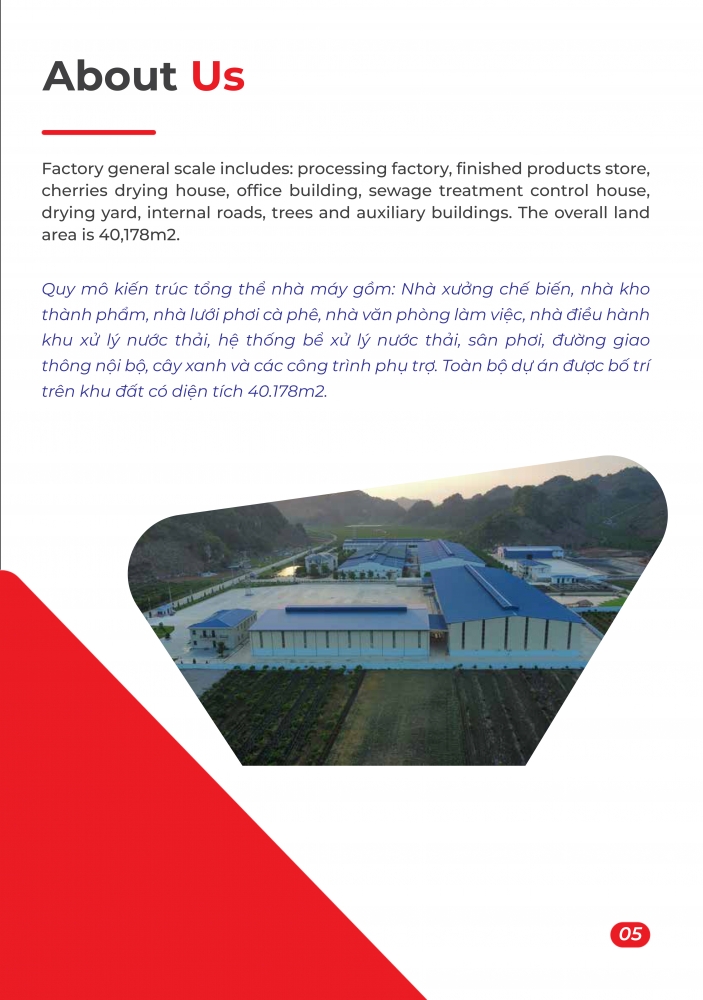
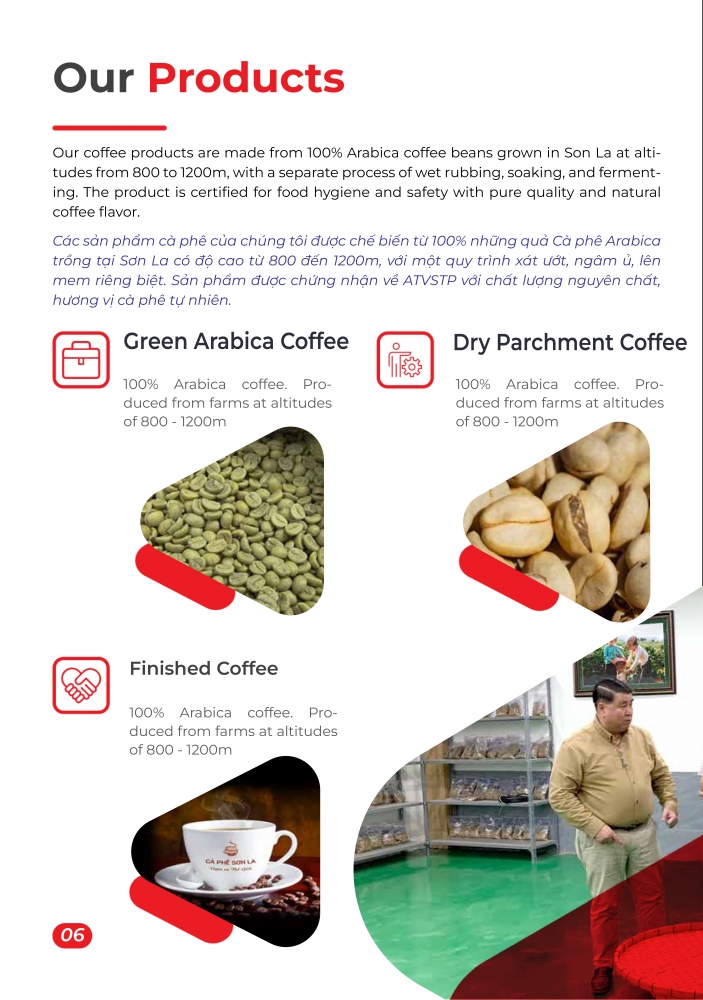
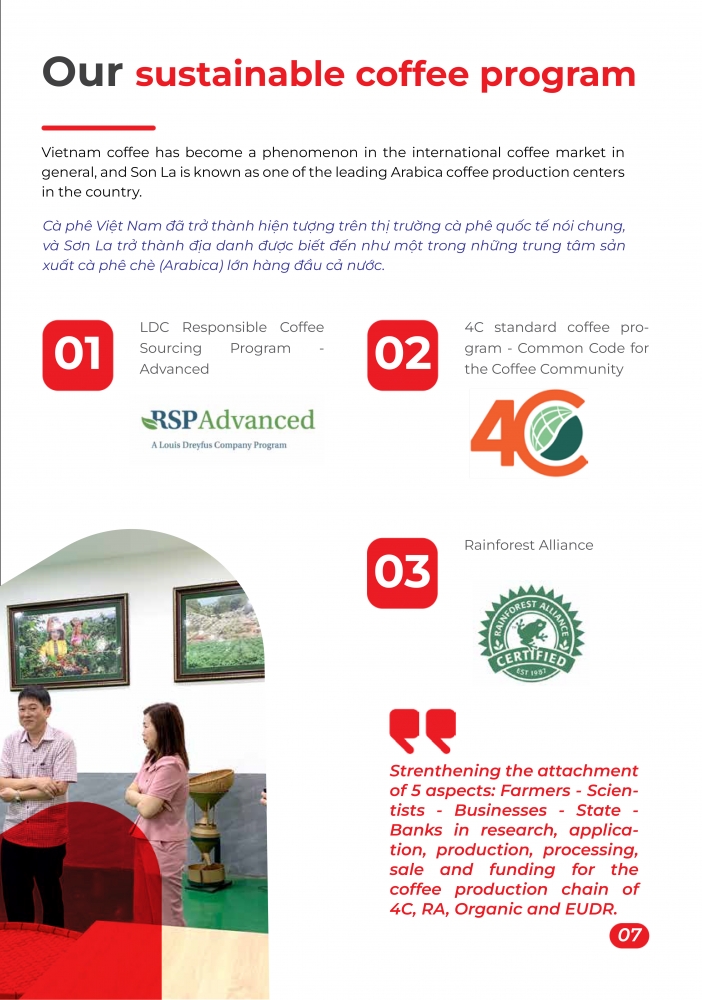
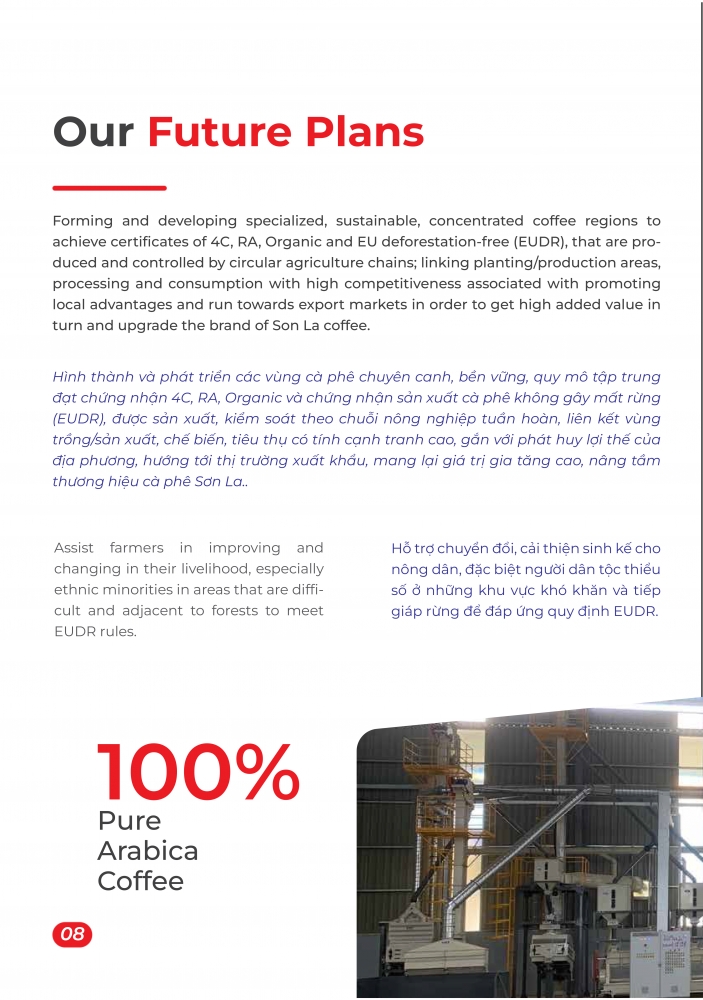
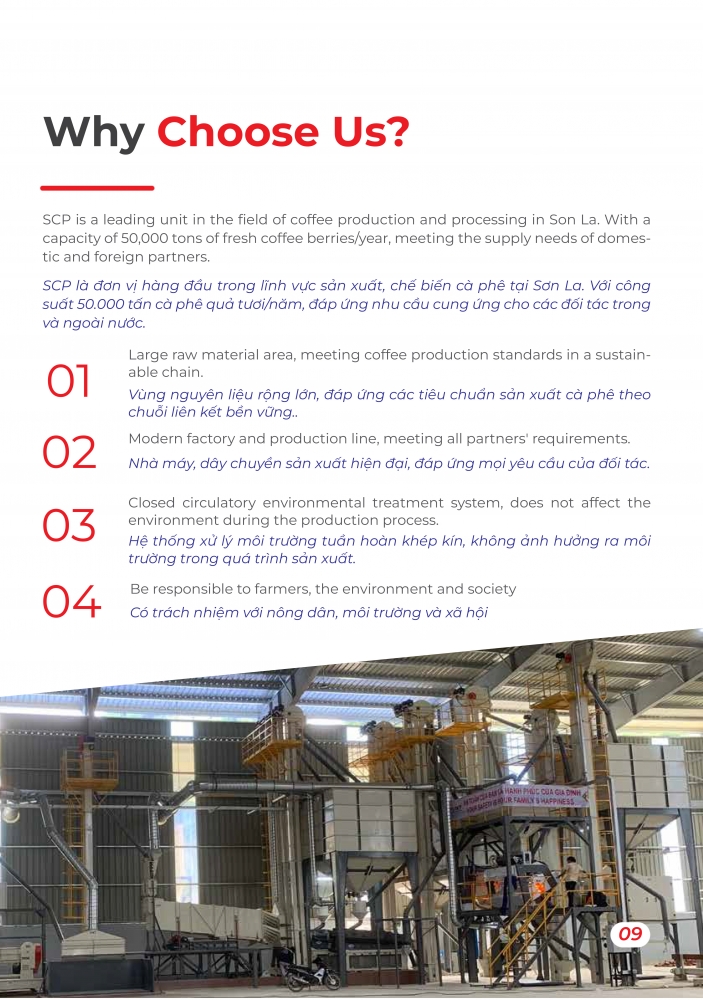
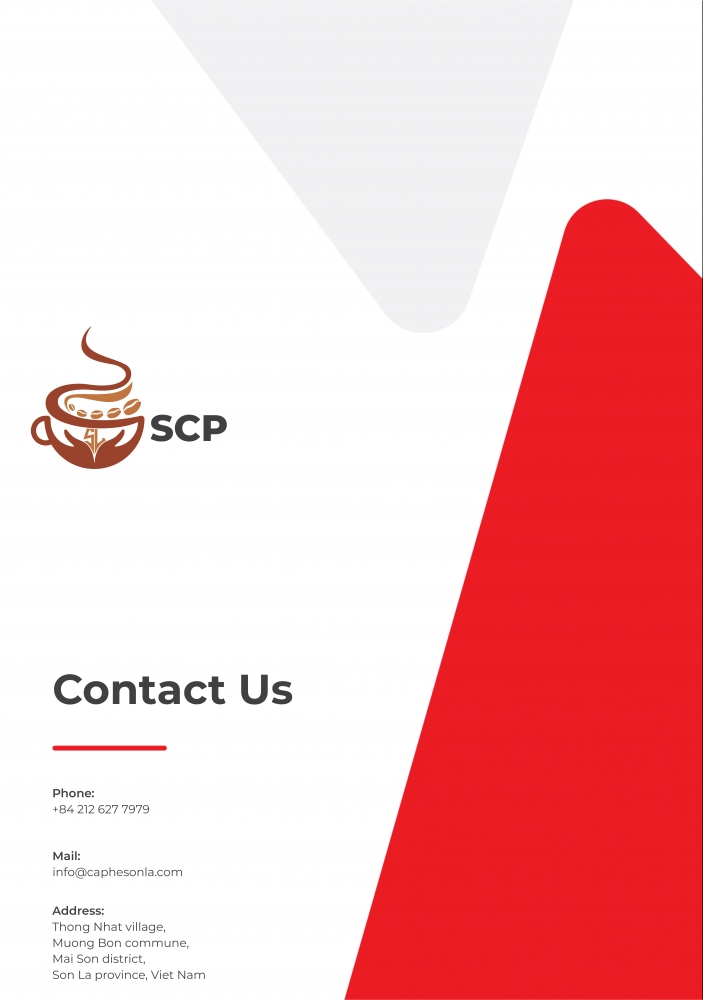
SON LA COFFEE - REACHING OUT TO THE WORLD
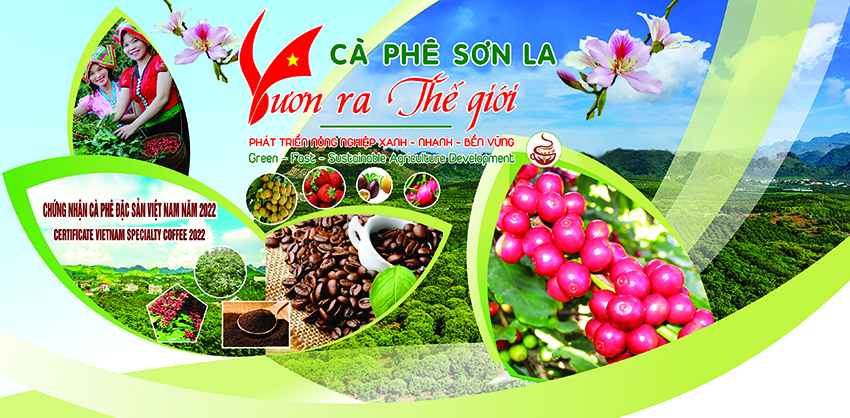
After more than 30 years of developing coffee trees, Son La is currently one of the localities with the country's largest area and production of Arabica. This place is also considered a new land to help affirm the image and brand of Vietnamese coffee on the world coffee map. Especially since 2017, Son La Coffee has made a strong transformation when it was granted the geographical indication certificate "Son La Coffee" by the Intellectual Property Office of Viet Nam (Ministry of Science and Technology) for the following types of products: Green coffee, roasted coffee beans, and powdered coffee, which leads Son La coffee to be a regional specialty product and one of Vietnam's first 20 5-star OCOP products that domestic and foreign consumers highly appreciate.
By 2020, the province's coffee area reached 17,804 hectares, and the output reached 27,581 tons of green coffee. The locality has established several production areas specializing in cultivation according to the chain linking production, processing, and consumption based on applying science and technology to production, processing, and environmental protection, gradually meeting the demand for consumption and export.
Despite the achieved results, coffee production in the area still faces many difficulties. The region of coffee grows quite quickly, but some areas are still dispersed. The change of variety structure is limited, mainly the unselected Catimor tea coffee variety. The scope of old coffee accounts for a relatively high proportion. Coffee cultivation is also highly dependent on natural conditions. Implementing technical processes has yet to be sustainable due to the complex terrain. Coffee production has not been associated with climate change adaptation, which has affected the productivity, quality, and efficiency of intensive investment of producers.
The industry's value chain must be more closely linked, including production, quality control, purchasing, processing, preservation, consumption of products, branding, and trade promotion. The types of organizations producing and trading coffee reveal many limitations. The processing of coffee at the scale of farmers and other processing facilities still has many weaknesses affecting the environment.

In 2021, Son La province developed and promulgated a project on developing coffee material areas associated with processing and environmental protection in the region (Decision No. 331/QD-UBND dated March 1, 2021, of the People's Committee of Son La province). Accordingly:
By 2025, Son La province strives to stably develop the coffee area of the whole region of 17,000 ha (Mai Son: 6,160 ha; Thuan Chau: 5,215 ha; Son La City: 4,820 ha), the average yield is from 2.0 to 2.5 tons of green coffee per ha, the output of green coffee is estimated at 33,600 tons. In addition, the province will apply some new coffee varieties with high yield and quality suitable for the export market to serve grafting and replanting coffee with an area of about 8,000 hectares; About 70 to 90% (15,500 ha) of coffee area for harvesting products is applied with certified sustainable coffee production processes; Since Coffee processing facilities have wastewater treatment systems, their wastewater meets environmental standards, helping focus on improving coffee processing quality and environmental protection. In addition, intensive processing also helps to enhance the value of coffee production. Forming cooperative groups, coffee tree development cooperatives with enterprises, fruit purchasing, and processing companies to develop coffee material areas through contracts linking production and consumption associated with investment in coffee processing factories.
By 2030, the goal is to focus on large-scale coffee development, apply high technology to production, invest in intensive cultivation with new coffee varieties closely associated with the processing industry and environmental protection, and stabilize the area of 16,000 ha. Besides, Green coffee production is expected to reach 35,000 tons per year. Replanting will come to 9,800 ha. We are developing specialty coffee on 5,950 hectares and fostering coffee material areas meeting sustainable standards of about 13,500 ha (Mai Son: 5,000 ha; Thuan Chau: 4,300 ha; Son La City: 3,950 ha).








SON LA COFFEE - REACHING OUT TO THE WORLD

After more than 30 years of developing coffee trees, Son La is currently one of the localities with the country's largest area and production of Arabica. This place is also considered a new land to help affirm the image and brand of Vietnamese coffee on the world coffee map. Especially since 2017, Son La Coffee has made a strong transformation when it was granted the geographical indication certificate "Son La Coffee" by the Intellectual Property Office of Viet Nam (Ministry of Science and Technology) for the following types of products: Green coffee, roasted coffee beans, and powdered coffee, which leads Son La coffee to be a regional specialty product and one of Vietnam's first 20 5-star OCOP products that domestic and foreign consumers highly appreciate.
By 2020, the province's coffee area reached 17,804 hectares, and the output reached 27,581 tons of green coffee. The locality has established several production areas specializing in cultivation according to the chain linking production, processing, and consumption based on applying science and technology to production, processing, and environmental protection, gradually meeting the demand for consumption and export.
Despite the achieved results, coffee production in the area still faces many difficulties. The region of coffee grows quite quickly, but some areas are still dispersed. The change of variety structure is limited, mainly the unselected Catimor tea coffee variety. The scope of old coffee accounts for a relatively high proportion. Coffee cultivation is also highly dependent on natural conditions. Implementing technical processes has yet to be sustainable due to the complex terrain. Coffee production has not been associated with climate change adaptation, which has affected the productivity, quality, and efficiency of intensive investment of producers.
The industry's value chain must be more closely linked, including production, quality control, purchasing, processing, preservation, consumption of products, branding, and trade promotion. The types of organizations producing and trading coffee reveal many limitations. The processing of coffee at the scale of farmers and other processing facilities still has many weaknesses affecting the environment.

In 2021, Son La province developed and promulgated a project on developing coffee material areas associated with processing and environmental protection in the region (Decision No. 331/QD-UBND dated March 1, 2021, of the People's Committee of Son La province). Accordingly:
By 2025, Son La province strives to stably develop the coffee area of the whole region of 17,000 ha (Mai Son: 6,160 ha; Thuan Chau: 5,215 ha; Son La City: 4,820 ha), the average yield is from 2.0 to 2.5 tons of green coffee per ha, the output of green coffee is estimated at 33,600 tons. In addition, the province will apply some new coffee varieties with high yield and quality suitable for the export market to serve grafting and replanting coffee with an area of about 8,000 hectares; About 70 to 90% (15,500 ha) of coffee area for harvesting products is applied with certified sustainable coffee production processes; Since Coffee processing facilities have wastewater treatment systems, their wastewater meets environmental standards, helping focus on improving coffee processing quality and environmental protection. In addition, intensive processing also helps to enhance the value of coffee production. Forming cooperative groups, coffee tree development cooperatives with enterprises, fruit purchasing, and processing companies to develop coffee material areas through contracts linking production and consumption associated with investment in coffee processing factories.
By 2030, the goal is to focus on large-scale coffee development, apply high technology to production, invest in intensive cultivation with new coffee varieties closely associated with the processing industry and environmental protection, and stabilize the area of 16,000 ha. Besides, Green coffee production is expected to reach 35,000 tons per year. Replanting will come to 9,800 ha. We are developing specialty coffee on 5,950 hectares and fostering coffee material areas meeting sustainable standards of about 13,500 ha (Mai Son: 5,000 ha; Thuan Chau: 4,300 ha; Son La City: 3,950 ha).





